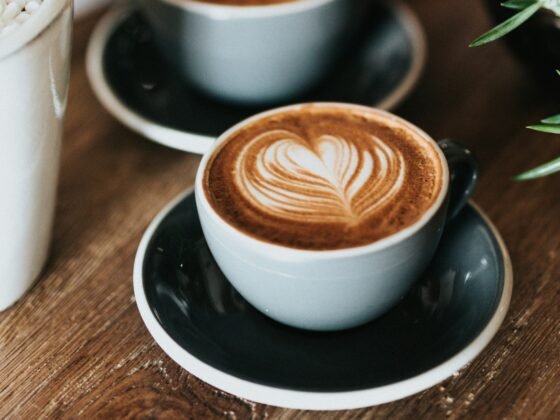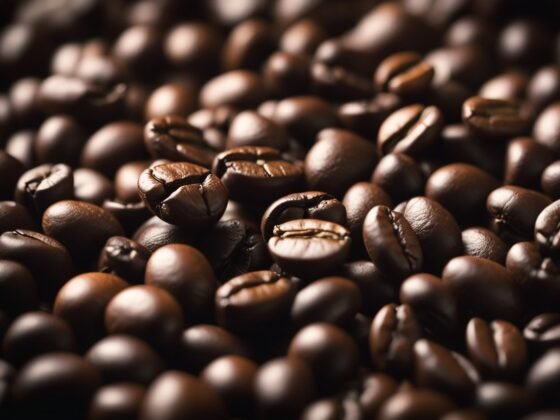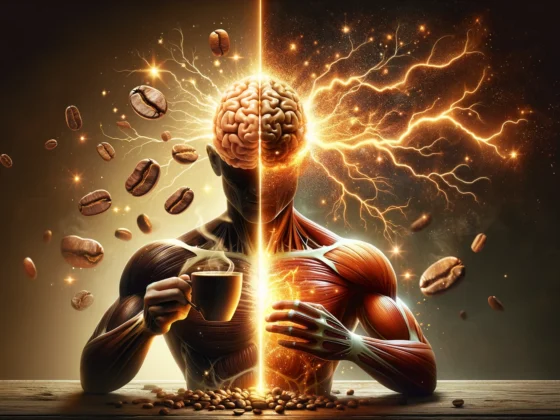Caffeine content in coffee can vary widely depending on the type of coffee bean, the brewing method, and the serving size. I have found that among the many types of coffee, the strongest kick tends to come from light roast beans, contrary to the common belief that darker roasts pack more caffeine. The light roast retains more caffeine because it spends less time in the roaster, which can break down the caffeine molecules.

In exploring the various coffee beverages, it turns out that the method of preparation also plays a crucial role in caffeine levels. For instance, drip coffee, which is brewed by allowing water to drip through grounds, typically contains more caffeine than espresso by volume because of the longer brewing process and the greater amount of grounds used. However, due to the concentrated nature of espresso, the caffeine content per ounce is higher.
Serving sizes may not be standardized across coffee shops, making it challenging to determine which coffee has the most caffeine just by eyeing the cup. To truly understand which coffee offers the most potent dose of caffeine, one must dig deeper into the specifics of the bean type, brewing technique, and precise serving portions.
The Chemistry of Caffeine

Caffeine is a stimulating compound prevalent in coffee beans, significantly influencing the coffee’s strength and effect.
Caffeine Content in Coffee Beans
My research shows that caffeine is an alkaloid known chemically as 1,3,7-trimethylxanthine. The typical caffeine content in coffee beans ranges from 1.1% to 2.2% by weight. It’s interesting to note that Robusta beans contain, on average, almost double the caffeine of Arabica beans. For a clearer understanding, here’s a simple table showing this comparison:
| Bean Type | Average Caffeine Content |
|---|---|
| Arabica | 1.2% |
| Robusta | 2.2% |
Factors Affecting Caffeine Levels
Various factors can influence the caffeine levels in coffee beans. I’ve identified two primary factors: genetics and growing conditions. Genetics dictate the natural caffeine content potential of a bean, whereas growing conditions, such as soil composition, altitude, and climate, can lead to variations in this innate content. Additionally, the brewing method later used can also impact the final caffeine amount in a cup of coffee. Espresso, for instance, is more concentrated and thus typically contains more caffeine per ounce compared to regular drip coffee.
Types of Coffee Drinks

When considering which coffee has the most caffeine, it’s important to explore the various types of coffee drinks available. Each has its distinct preparation method and caffeine content.
Espresso-Based Drinks
Espresso serves as the core for a variety of coffee specialties. A single shot typically contains about 63 mg of caffeine in a 1-ounce serving. Here’s a breakdown of popular espresso-based drinks:
- Latte: Combines a shot of espresso with steamed milk and a light layer of foam.
- Cappuccino: Similar to a latte but with a greater proportion of foamed milk to steamed milk.
- Americano: A shot of espresso diluted with hot water, resulting in a flavor akin to brewed coffee but with a different caffeine concentration.
Brewed Coffee Varieties
Brewed Coffee, also known as drip coffee, is made by pouring hot water over ground coffee. Here are a few varieties:
- Single Serve Pod Coffee: Can range from 75 to 150 mg per pod, depending on the brand and blend.
- Cold Brew: Steeped for an extended time and served cold; its caffeine content can be quite high, sometimes exceeding that of traditional hot brewed coffee.
Instant Coffee and Powdered Concentrates
Instant Coffee is made from dried coffee extract, and typically has less caffeine. Here are some specifics:
- Standard Instant Coffee: Generally has about 30-90 mg of caffeine per teaspoon of powder, but this can vary by brand.
- Powdered Coffee Concentrate: A newer category where you mix the powder with water to create a cup of coffee, similar in caffeine content to instant varieties.
Comparing Coffee Brands

When looking at coffee brands, it is important to understand that caffeine content can vary widely. I will focus on two main areas: the offerings from commercial coffee chains and the packaged coffee brands available for home brewing.
Commercial Coffee Chains
Starbucks tends to be at the higher end of the caffeine spectrum. For instance, I can confirm that a grande Pike Place Roast contains about 310 mg of caffeine. In contrast, the same size of coffee from Dunkin’ Donuts has approximately 210 mg of caffeine. These numbers suggest that those looking for a stronger caffeine kick might prefer Starbucks.
- Starbucks Grande Pike Place Roast: 310 mg
- Dunkin’ Donuts Medium Coffee: 210 mg
Packaged Coffee Brands
Regarding home brewing, Death Wish Coffee boasts the highest caffeine content. A mere 12 ounce cup contains around 728 mg of caffeine. On the other hand, Folgers, a popular American brand, has roughly 60-80 mg of caffeine per 8 ounce serving in their Classic Roast. This comparison makes it clear that Death Wish Coffee is marketed to those who want an extra-strong caffeine dose.
- Death Wish Coffee (12 oz cup): ~728 mg
- Folgers Classic Roast (8 oz serving): 60-80 mg
Brewing Techniques and Caffeine Extraction

In analyzing the relationship between brewing techniques and caffeine extraction, I focus on specific variables. The grinding level and roast of coffee beans, along with the brewing time and temperature, are critical in determining the caffeine content of a coffee beverage.
Grinding and Roasting Effects
The grind size and roasting profile of coffee beans have a direct impact on caffeine extraction. Finer grinds increase the surface area in contact with water, leading to a higher caffeine extraction rate. Conversely, coarser grinds result in a slower extraction process. When it comes to roasting, lighter roasts retain more caffeine because they spend less time in the roaster, whereas darker roasts may lose some caffeine due to the longer roasting process and higher temperatures involved.
- Grind Size:
- Finer Grind: Increased extraction rate
- Coarser Grind: Decreased extraction rate
- Roast Profile:
- Lighter Roast: Higher caffeine content
- Darker Roast: Slightly less caffeine content
Brewing Time and Temperature
Brewing time and temperature are crucial in caffeine extraction. Higher temperatures can extract caffeine more efficiently, with optimal extraction typically occurring between 195°F to 205°F (90°C to 96°C). As for brewing time, a longer extraction will generally result in more caffeine being drawn out. Methods such as espresso, which use a short, intense brew time, often have a higher caffeine concentration due to the high pressure and temperature even with the brief exposure.
- Brewing Temperature:
- Ideal Range: 195°F to 205°F (90°C to 96°C)
- Higher Temperatures: Efficient caffeine extraction
- Brewing Time:
- Short Brew (e.g., Espresso): High caffeine concentration in small volume
- Long Brew (e.g., French Press): Increased caffeine in larger volume
Caffeine Intake Recommendations

Understanding caffeine intake recommendations is crucial to maximizing the benefits of coffee while avoiding adverse health effects. It’s key to balance enjoyment with potential risks.
Health Guidelines for Caffeine
According to health expert consensus, moderate coffee consumption can be part of a healthy adult’s diet. I follow the guidelines set by the U.S. Dietary Guidelines and the Mayo Clinic, which state that adults can safely consume up to 400 milligrams of caffeine per day. This equates to approximately four 8-ounce cups of brewed coffee. Pregnant women are advised to limit their caffeine intake to less than 200 milligrams per day due to potential impacts on fetal development.
Individual Sensitivity: It is also important to consider personal tolerance, as metabolism and sensitivity to caffeine vary. For some individuals, even a small amount can cause insomnia, jitters or a rapid heartbeat.
Daily Caffeine Limits and Effects
Daily caffeine consumption should stay within the recommended limits to prevent negative health effects. Here’s a quick reference:
- Safe Upper Limit: 400 mg per day for most healthy adults
- Expectant Mothers: 200 mg per day for pregnant women
Potential Effects of Exceeding Limits:
- Increased heart rate
- Insomnia
- Nervousness
- Restlessness
- Stomach upset
- Muscle tremors
By maintaining caffeine intake within these parameters, individuals can enjoy the benefits of coffee both in terms of alertness and potential health benefits like antioxidant intake, without undue risk.
Caffeine Sensitivity Considerations

When selecting a coffee based on its caffeine content, it’s essential to consider personal caffeine sensitivity. I understand that individual responses to caffeine vary greatly due to genetics and other physiological factors. For those with higher sensitivity, even small amounts of caffeine can cause discomfort, including jitters, an increased heart rate, or difficulty sleeping.
The following points outline key factors in caffeine sensitivity:
- Genetic Factors: Certain genes affect how my body metabolizes caffeine. For instance, variations in the CYP1A2 gene influence the speed at which I process caffeine.
- Regular Consumption: Regular intake of caffeine leads to tolerance. This means I may require higher doses to achieve the desired effect over time, but I also might experience less discomfort from a strong coffee.
- Physical Attributes: My weight and overall health can affect caffeine sensitivity. Typically, individuals with less body mass may feel more intense effects from caffeine.
- Medications: Interactions between caffeine and certain medications can alter its effects. I should consult with a healthcare provider if I’m on medication and considering high-caffeine coffees.
My daily habits and lifestyle also impact how caffeine affects me. It’s vital to be aware of my limitations, as too much caffeine can lead to adverse side effects. When trying a new coffee with higher caffeine content, I should start with a small portion to assess my reaction.
Below is a brief list to help assess my caffeine sensitivity:
- Observe any physical reactions after consuming caffeine, like tremors or palpitations.
- Note any changes in my sleep patterns or quality of sleep.
- Monitor my mood and stress levels, as caffeine can exacerbate anxiety.
- Start with lower-caffeine options and gradually increase if desired and tolerated.
Alternatives to High-Caffeine Coffee

For individuals seeking lower caffeine content or completely caffeine-free options, various choices are available that can satisfy the taste for coffee without the high caffeine levels.
Lower-Caffeine Coffee Options
I’ll first examine coffees that offer a reduced caffeine content. One way to achieve this is to choose light roasts over dark roasts, as they typically contain slightly less caffeine. Half-caff coffee is another popular option, where half of the beans are regular, and half are decaffeinated, providing a balanced taste with less caffeine. The following table showcases some common lower-caffeine coffee choices:
| Coffee Type | Caffeine Content |
|---|---|
| Light Roast | Slightly less than dark roasts |
| Half-Caff | 50% less caffeine than regular |
| Arabica Beans | Generally less caffeine than Robusta beans |
Caffeine-Free Substitutes
I now turn to entirely caffeine-free alternatives. Herbal teas such as chamomile or peppermint are naturally caffeine-free and can be enjoyed at any time of the day. A popular coffee alternative is chicory root coffee, a beverage with a similar flavor profile to coffee but without any caffeine. Below is a list of some caffeine-free substitutes:
- Herbal teas (chamomile, peppermint, rooibos)
- Chicory root coffee
- Decaffeinated coffee (less than 3% of original caffeine content)
- Grain-based beverages (barley, rye, malt)



